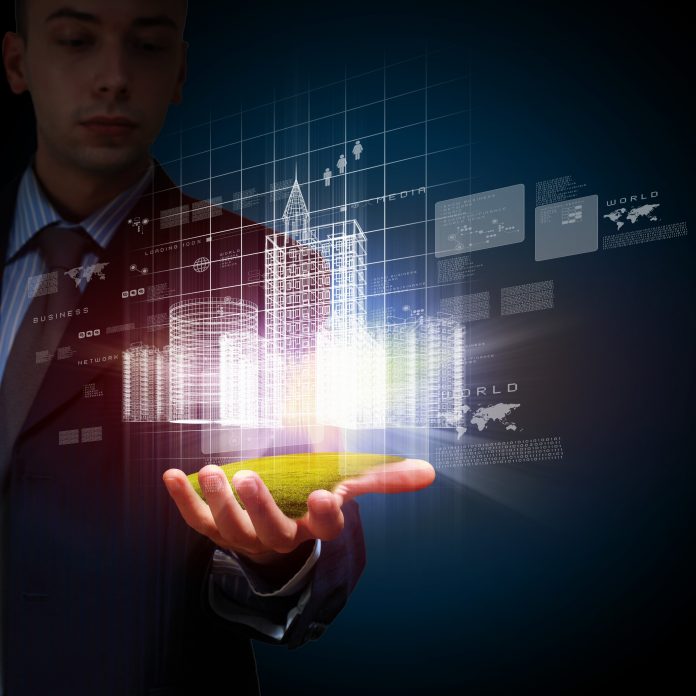Jade Myers of Surety Bonds discusses how the digital twin revolution is currently shaping the construction industry and why it is expected to replace the current BIM and CAD technologies
A ‘digital twin’, put simply, is a vertical representation of a physical thing. As a concept, it sounds little better than a typical CAD model for a building in the design phase, but the twin is so much more than that.
In fact, it may well be a revolutionary process waiting to completely transform the way the construction industry operates.
Why do we need digital twin technology?
Virtual planning is already ubiquitous in construction and has been for at least a decade – such as BIM (Building Information Modelling). BIM is certainty a proactive approach that helps to provide clear visualisations from every stage of the construction process, from the initial concepts, design, to the building stages.
The problem with BIM is that it is, frankly, underappreciated, and has failed to require proper discipline throughout the industry.
For example, a lot of people in the industry just think of it as software that “helps” as an aide, rather than a serious attempt at providing the over-arching framework of a project. It encourages people to work in isolation, working away at their own specific tasks. The problem with this isolation effect is that any problems that come about are pushed out of sight and out of mind. Such thinking can cause huge problems; design flaws; and delays later into the construction process.
The purpose of the digital twin is to prevent these problems from arising. It is to deal with any issues head-on as they appear, something BIM has failed to deliver.
How the digital twin improves upon BIM
Critics of BIM have likened it to a filing cabinet in which everything can be stuffed in – good or bad documents, whereas the digital twin process has been likened to building an Airfix kit.
But what is it, exactly, about the digital twin that is causing so much excitement in the industry?
The answer is because the digital twin is effectively a user manual. It means everyone involved in the process is using the same data set during the planning and the building phases.
For example, with the BIM approach, there may be an instance where the plans will state “a door will go here”, effectively leaving it up to whoever is in charge of installing the doors to figure out the dimensions and the materials needed. This vagueness (and potential headache-inducing issue down the line) is removed and instead, every little detail about the door installation is detailed up front.
The digital twin also adds a fourth dimension to the process of construction – that of time. This one-ups it from being just another CAD geometry model and affords an inherent understanding of all the capabilities of the materials used and how they interact with one another. Adding in this fourth dimension is critical to investors because shows them clearly what the plan of action is and dispels of any uncertainty that might put people off.
Faster, smarter, and better
Digital twins provide brick-by-brick guides that inform those in the industry of how and where to assemble everything and in exactly the correct order. And the benefits of the digital twin are not just confined to the building itself. Digital twin models take into account the building sites itself – from where to store things and how, how the weather might affect the building site, and so on.
These models can even give an answer as to which method of assembly would be better given the circumstances, whether that being a pre-fabricated method or another method, and so on. It should come as no surprise that digital twin technology reduces the design and construction phases considerably and can mean the difference from months to weeks in terms of employment of contractors.
And another thing: the current preferred way of dealing with already constructed buildings is to deploy a BMS tool (Building Management System). The BMS’s job is to regulate how the building should be maintained and operated: including the lighting, security, and ventilation. The traditional view has been one of considering finished buildings as static objects, whereas the digital twin is re-thinking them for what they are: dynamic objects.
What this means is that the digital twin will allow owners and managers to make investment decisions based on actionable, dynamic, data. This, in turn, will help everyone to better make decisions; understand them more efficiently; understand their impacts and allow them to better utilise their assets over time.
Projections of a digital twin-dominated future
With the ever-dominant Internet increasing in speed, universality and with the era of Big Data entering full swing, we can expect the digital twin to provide the link between incoming information and the scheduling of maintenance operations. Much of this information will come in real time, from sensors and simulations, and will enable automatic reactive and intelligent responses.
The digital twin’s role will be like a watchdog that will be able to quickly identify and locate assets if they are in a poor condition and take action to prevent failures as they may come about. It is a performance-based way of modelling buildings, rather than the standard geometric CAD and BIM approaches that are currently the zeitgeist today. That I imagine will change, and change quickly, as the digital twin drives efficiency like never before.
Jade Myers
LinkedIn: Surety Bonds














